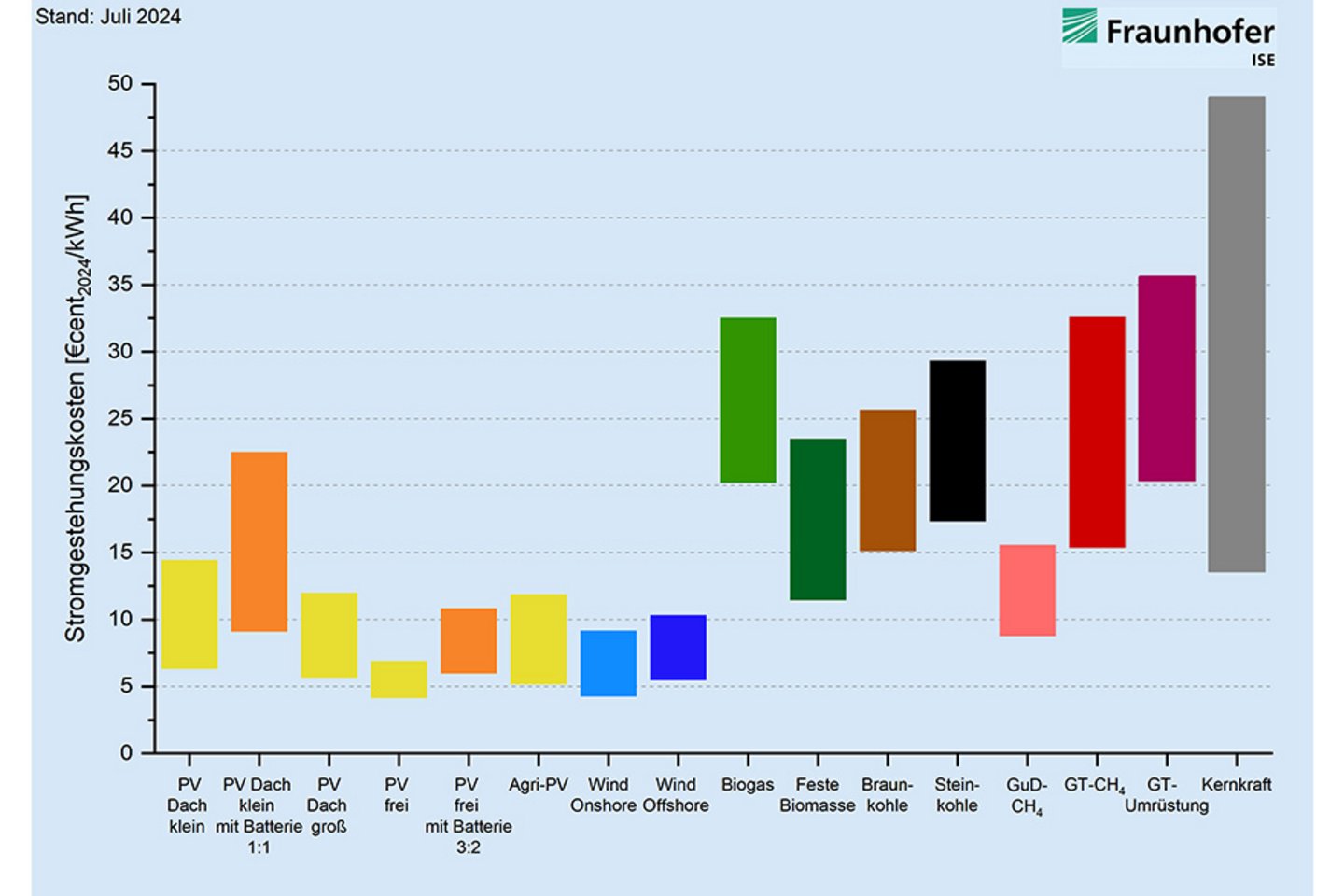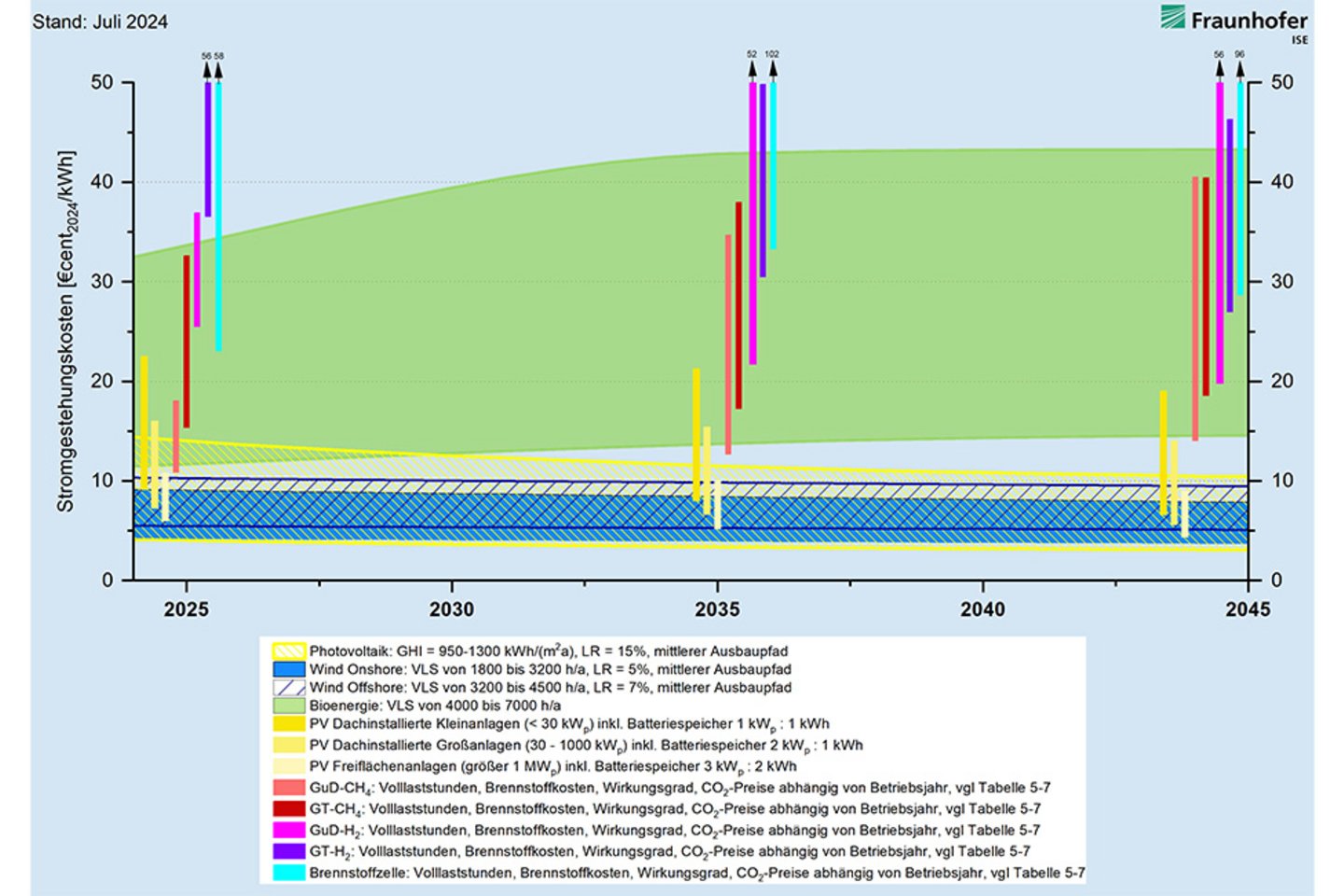Solar and wind power cheaper than electricity from fossil-fuelled power plants.
The Fraunhofer Institute for Solar Energy Systems (ISE) has been calculating the average generation costs per kilowatt hour of electricity for Germany at regular intervals since 2010. This time, the electricity generation costs for agrivoltaics, hydrogen power plants and new nuclear power plants have also been taken into account.
The press release states: "According to the study's calculations, ground-mounted PV systems and onshore wind power plants are the most cost-effective technologies in Germany, with costs of 4.1 to 9.2 cents per kilowatt hour, not only among renewable energies, but among all types of power plants. The average electricity generation costs from nuclear power plants is in the range of 13 to 50 cents and is in last place here and would require enormous subsidy costs if implemented."
Summarising the electricity generation costs according to the study at a glance:
- Small PV system on the roof: 7 to 14 cents/kWh
- Large PV system on the roof: 6 to 12 cents/kWh
- Ground-mounted PV system: 4 to 6 cents/kWh
- Ground-mounted PV system with battery: 6 to 11 cents/kWh
- Small PV system on the roof with battery: 9 to 22 cents/kWh
- Agri-PV: 5 to 12 cents/kWh
- Onshore wind: 4 to 9 cents/kWh
- Offshore wind: 5 to 10 cents/kWh
- Nuclear power: 13 to 49 cents/kWh
The calculations show that ground-mounted PV systems are up to 12 times cheaper (4 cent vs. 49 cent) than a nuclear power plant. And they clearly show that the large-scale projects currently being launched in Austria with a combination of agricultural PV systems and wind farms are good investments for the future in order to cool down the inflation fuelled by fossil fuels such as gas and oil in the long term.
The study also calculates a forecast for falling electricity generation costs from renewable energies up to 2045. The cost trends for the construction and operation of the plants up to 2045 were also taken into account for all power plant technologies. This also shows a high cost reduction potential for solar and wind power generation, whereby the price improvements for wind energy are to be expected in terms of a higher number of full load hours and larger plants.
EWS focuses on the energy solutions of the future
The energy transition is already in full swing. Renewable forms of power generation are increasingly pushing back fossil energy consumption. Above all, the expansion of wind and solar energy is making a significant contribution to a climate-friendly, resilient and secure energy supply.
As a successful planning office for wind energy and (agricultural) photovoltaic systems for 30 years, we work both routinely and reliably for our customers and together we realise the most suitable and efficient renewable energy projects for the respective location. As with wind energy, we also focus on maximum area efficiency and the most favourable electricity generation costs for solar power projects.
With the EWS Sonnenfeld®, we have developed an agrivoltaic system for the triple utilisation of good grassland and arable land, which we have been successfully implementing for around two years as a general contractor and planning and executing for our customers.
Because nothing goes better together than wind and solar power, which can be combined perfectly both seasonally and technically, we are also working at full speed in the area of hybrid wind and solar parks. We realise that the trend is clearly moving in the direction of hybrid parks due to the synergy effects in terms of cost and time savings during planning and implementation and also due to a more constant and stable grid feed-in.
Read the entire press release from Fraunhofer ISE as a pdf for download (in German).


